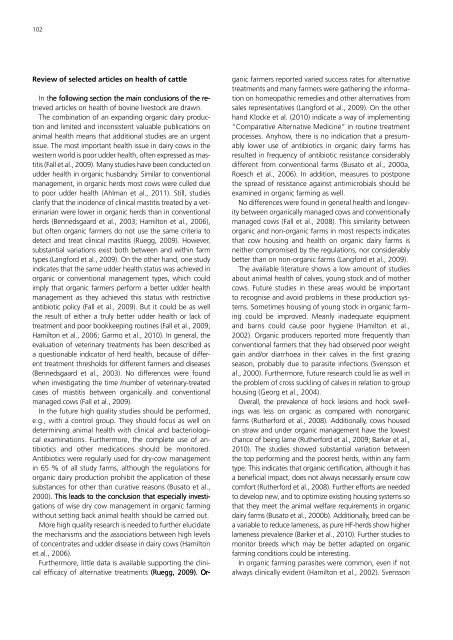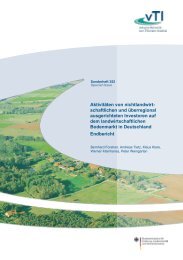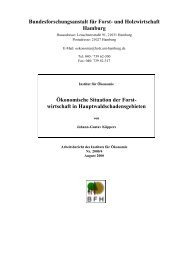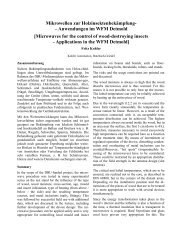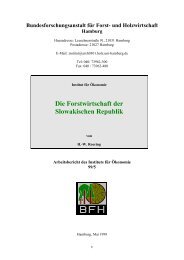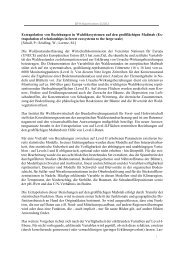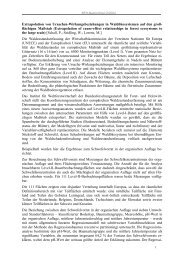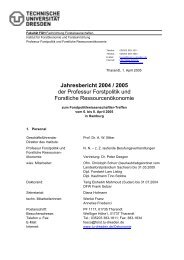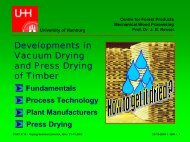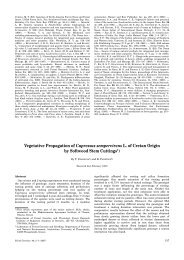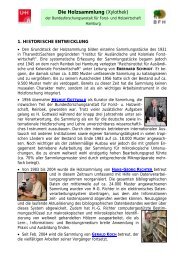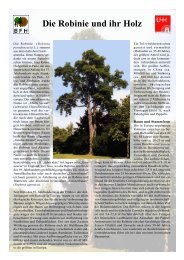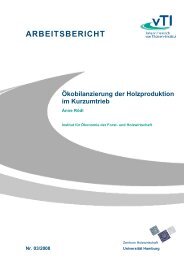Landbauforschung vTI Agriculture and Forestry ... - 1. Januar 2008
Landbauforschung vTI Agriculture and Forestry ... - 1. Januar 2008
Landbauforschung vTI Agriculture and Forestry ... - 1. Januar 2008
You also want an ePaper? Increase the reach of your titles
YUMPU automatically turns print PDFs into web optimized ePapers that Google loves.
102<br />
Review of selected articles on health of cattle<br />
In the he following section the main conclusions of the retrieved<br />
articles on health of bovine livestock are drawn.<br />
The combination of an exp<strong>and</strong>ing organic dairy production<br />
<strong>and</strong> limited <strong>and</strong> inconsistent valuable publications on<br />
animal health means that additional studies are an urgent<br />
issue. The most important health issue in dairy cows in the<br />
western world is poor udder health, often expressed as mastitis<br />
(Fall et al., 2009). Many studies have been conducted on<br />
udder health in organic husb<strong>and</strong>ry. Similar to conventional<br />
management, in organic herds most cows were culled due<br />
to poor udder health (Ahlman et al., 2011). Still, studies<br />
clarify that the incidence of clinical mastitis treated by a veterinarian<br />
were lower in organic herds than in conventional<br />
herds (Bennedsgaard et al., 2003; Hamilton et al., 2006),<br />
but often organic farmers do not use the same criteria to<br />
detect <strong>and</strong> treat clinical mastitis (Ruegg, 2009). However,<br />
substantial variations exist both between <strong>and</strong> within farm<br />
types (Langford et al., 2009). On the other h<strong>and</strong>, one study<br />
indicates that the same udder health status was achieved in<br />
organic or conventional management types, which could<br />
imply that organic farmers perform a better udder health<br />
management as they achieved this status with restrictive<br />
antibiotic policy (Fall et al., 2009). But it could be as well<br />
the result of either a truly better udder health or lack of<br />
treatment <strong>and</strong> poor bookkeeping routines (Fall et al., 2009;<br />
Hamilton et al., 2006; Garmo et al., 2010). In general, the<br />
evaluation of veterinary treatments has been described as<br />
a questionable indicator of herd health, because of different<br />
treatment thresholds for different farmers <strong>and</strong> diseases<br />
(Bennedsgaard et al., 2003). No differences were found<br />
when investigating the time /number of veterinary-treated<br />
cases of mastitis between organically <strong>and</strong> conventional<br />
managed cows (Fall et al., 2009).<br />
In the future high quality studies should be performed,<br />
e.g., with a control group. They should focus as well on<br />
determining animal health with clinical <strong>and</strong> bacteriological<br />
examinations. Furthermore, the complete use of antibiotics<br />
<strong>and</strong> other medications should be monitored.<br />
Antibiotics were regularly used for dry-cow management<br />
in 65 % of all study farms, although the regulations for<br />
organic dairy production prohibit the application of these<br />
substances for other than curative reasons (Busato et al.,<br />
2000). . This leads to the conclusion that especially investiinvestigations of wise dry cow management in organic farming<br />
without setting back animal health should be carried out.<br />
More high quality research is needed to further elucidate<br />
the mechanisms <strong>and</strong> the associations between high levels<br />
of concentrates <strong>and</strong> udder disease in dairy cows (Hamilton<br />
et al., 2006).<br />
Furthermore, little data is available supporting the clinical<br />
efficacy of alternative treatments (Ruegg, 2009). . Or-<br />
Or-<br />
ganic farmers reported varied success rates for alternative<br />
treatments <strong>and</strong> many farmers were gathering the information<br />
on homeopathic remedies <strong>and</strong> other alternatives from<br />
sales representatives (Langford et al., 2009). On the other<br />
h<strong>and</strong> Klocke et al. (2010) indicate a way of implementing<br />
“Comparative Alternative Medicine” in routine treatment<br />
processes. Anyhow, there is no indication that a presumably<br />
lower use of antibiotics in organic dairy farms has<br />
resulted in frequency of antibiotic resistance considerably<br />
different from conventional farms (Busato et al., 2000a,<br />
Roesch et al., 2006). In addition, measures to postpone<br />
the spread of resistance against antimicrobials should be<br />
examined in organic farming as well.<br />
No differences were found in general health <strong>and</strong> longevity<br />
between organically managed cows <strong>and</strong> conventionally<br />
managed cows (Fall et al., <strong>2008</strong>). This similarity between<br />
organic <strong>and</strong> non-organic farms in most respects indicates<br />
that cow housing <strong>and</strong> health on organic dairy farms is<br />
neither compromised by the regulations, nor considerably<br />
better than on non-organic farms (Langford et al., 2009).<br />
The available literature shows a low amount of studies<br />
about animal health of calves, young stock <strong>and</strong> of mother<br />
cows. Future studies in these areas would be important<br />
to recognise <strong>and</strong> avoid problems in these production systems.<br />
Sometimes housing of young stock in organic farming<br />
could be improved. Meanly inadequate equipment<br />
<strong>and</strong> barns could cause poor hygiene (Hamilton et al.,<br />
2002). Organic producers reported more frequently than<br />
conventional farmers that they had observed poor weight<br />
gain <strong>and</strong>/or diarrhoea in their calves in the first grazing<br />
season, probably due to parasite infections (Svensson et<br />
al., 2000). Furthermore, future research could lie as well in<br />
the problem of cross suckling of calves in relation to group<br />
housing (Georg et al., 2004).<br />
Overall, the prevalence of hock lesions <strong>and</strong> hock swellings<br />
was less on organic as compared with nonorganic<br />
farms (Rutherford et al., <strong>2008</strong>). Additionally, cows housed<br />
on straw <strong>and</strong> under organic management have the lowest<br />
chance of being lame (Rutherford et al., 2009; Barker et al.,<br />
2010). The studies showed substantial variation between<br />
the top performing <strong>and</strong> the poorest herds, within any farm<br />
type. This indicates that organic certification, although it has<br />
a beneficial impact, does not always necessarily ensure cow<br />
comfort (Rutherford et al., <strong>2008</strong>). Further efforts are needed<br />
to develop new, <strong>and</strong> to optimize existing housing systems so<br />
that they meet the animal welfare requirements in organic<br />
dairy farms (Busato et al., 2000b). Additionally, breed can be<br />
a variable to reduce lameness, as pure HF-herds show higher<br />
lameness prevalence (Barker et al., 2010). Further studies to<br />
monitor breeds which may be better adapted on organic<br />
farming conditions could be interesting.<br />
In organic farming parasites were common, even if not<br />
always clinically evident (Hamilton et al., 2002). Svensson


